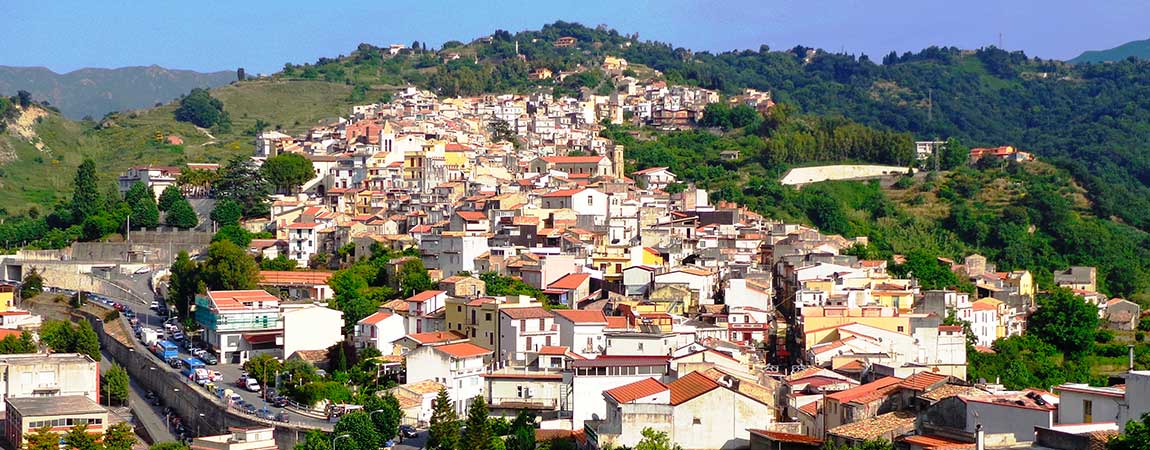
We are always taken by visiting renowned places as tourists, passing over other lesser known ones that would be equally worthy of being explored due to the atmosphere that one breathes there and their history.
San Pier Niceto, for example, is one of these and has jealously preserved the rhythms of a time which today appears to be outdated but which offers that serenity and peace which, unlike it, is impossible to find in large cities.
The Niceto Valley and little Samperi
In province of Messina is the Nicetus Valley where the municipality of San Pier Niceto or, as the locals say, Samperi.
This was once one fraction of Monforte San Giorgio, so much so that its ancient name was San Pietro di Monforte and it was only in 1861 that it was promoted to municipality taking its current name.
This would originate from his patron saint, Saint Peter and from the Greek word nike – i.e. victory – later transformed into Nicetus and which was attributed to the victory of the Christians against the Saracens during a battle.
However, there is another version about the origin of the name Niceto and which would bring this back to the hazelnut, which in the local dialect is called nucidda, since the cultivation of these trees was once quite flourishing in this area. To support the theory there is the nearby stream that many locals call ciumi nucidda, or hazelnut river.
The origins of San Pier Niceto
The theory according to which the Saracens built the town in a period between the XNUMXth and XNUMXth centuries is not at all rare since they settled in Contrada Porticelli whose name derives from an ancient stone quarry found in the hamlet of Pirrera.
Subsequently the inhabited area was enlarged with the creation of the Quattro Facce and Gallo districts, currently considered the oldest in San Pier Niceto, so much so that in the former you can see the Arco dei Saraceni.
The first religious building built was the Church in honor of San Leonardo of which today only the remains of the ancient building that are found in the neighborhood of the same name are visible.
The country was particularly susceptible to all the dominations that followed one another on the island starting from the Normans up to the Aragonese and this is made evident by the shape of the costumes worn on folkloristic occasions and in certain words in the local dialect.
In the first half of the XNUMXth century, San Pier Niceto became a County at the behest of King Philip IV who gave it to the first Prince of Monforte, Giuseppe Moncada Saccano. The Moncada family administered the Duchy for over two hundred years, practically until the arrival of the Thousand and the conquest of the island by Giuseppe Garibaldi.
The residence of the Princes was located in what is now via San Francesco, as evidenced by the still visible princely coat of arms.
There are many stories handed down from generation to generation that the Moncadas were famous for their cruelty and that they were used to making use of the concept of ius primae noctis when a woman got married.
Between the seventeenth and eighteenth centuries, the convents of the Paolotti and the Carmelites were built, as well as new churches were rebuilt and built.
The recurring events of San Pier Niceto
As in almost all Italian towns, local institutions organize religious and cultural events which attract the interest and curiosity of many tourists. In the specific case we can say that the majority of these are of a religious nature such as, for example, the one held in June during the Feast of Corpus Christi which is theInfiorata of San Pier Niceto. For this occasion, the streets of the center become canvases where floral carpets depicting sacred images are set up to pay homage to the passage of Corpus Domini and the procession of the faithful that follows it.
This is a ritual that has taken place every year since 1700 to fulfill a popular tradition which saw the streets of San Pier Niceto be adorned with bouquets of broom, rosemary, rose petals and orange leaves while, from the balconies and windows, colored embroidered blankets were affixed.
Little by little, the Infiorata has evolved more and more, enriching itself to the point of having earned the title of longest Infiorata in the world. The kermesse attracts many visitors from Sicily and other parts due to its uniqueness not only religious.
Another event that has been hosted in San Pier di Niceto for over twenty years is celebrated in August and is the Biscuit Festival during which it is possible to taste and buy the sampiroto biscuit, of local origin which provides a particular mixture where aniseed, sesame and wild fennel are added and which is used to accompany the traditional lemon granita, made with local citrus fruits.
© Image by Ephems, CC BY-SA 4.0, via Wikimedia Commons









